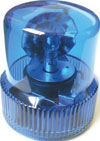Choosing an alarmJuly 2009 There are endless choices when purchasing an alarm system, make sure you buy a reliable system that will not let you down. More expensive is not always better. There are thousands of alarm systems on the market. So how do consumers know what to choose?
Homeowners need to make an effort when researching their alarm system. If family and home are your dearest assets, then choosing a well-known reliable brand to protect them should be non-negotiable. Equally important is whom you choose to install and back up your system.
When considering an alarm system, Regal Security sales and marketing director, Mel Labuschagne, believes consumers should never trade-off functionality, features and benefits, future expansion, stability and reliability over aesthetics. A product may be considered appealing due to its clean lines, coloured blue lights or rounded edges, but this should not be allowed to cloud its functionality.
“Do not fall into the common trap of making a superficial purchase instead of asking: ‘Is this product right for me?’ A good alarm system will achieve an elegant balance of all factors,” says Labuschagne.
Know your features
When choosing your alarm, focus on the features. Do not land up with limited features because you did not ask for them. Avoid a compromise or trade-off by determining what is needed and how your security concerns will be addressed by the features available on the alarm. Most importantly, the unit must be easy to use by all family members.
Based on a predefined budget, a homeowner should select a system which allows for future expansion from a supplier or service provider with a sound track record.
Homeowners should not be bulldozed into a ‘quick buy’ based on the instruction of an insurance company or because there is an urgent need for the installation.
“It is extremely important to get a clear understanding of the various detector functionalities and the complex layout of an alarm system to establish which type of control panel will best suit your needs,” warns Labuschange. “And ensure that the exact layout, number of detectors, areas protected and system operation is understood and agreed upon before installation.”
Cellular technology and alarms
Many alarm panels have add-on modules that allow the alarms to be controlled from a cellular phone. These modules give residents more control and the technology is secure because it is accessed via a pin code.
Francois Malan of Camsecure says cellular technology is taking home security to another level. “Allowing your security needs to be taken care of on your cellphone enables you to have a mobile control room in your pocket.”
If an alarm goes off at home, an SMS will immediately warn the resident who can immediately download footage from the cameras on site and analyse what caused the alarm. Communication by SMS is not the only mode of communication if your alarm is set off. Another means of communicating is via a GSM module or GPRS through to your computer.
Using your cellular network, you would be able to receive an e-mail giving details on the alarm system. Blackberry users can also interrogate their alarm system and analyse the history of an incident by using the Internet.
Homeowners can also turn their alarm on from their cellphone if they forget to do so when leaving home. Another option is the ability to activate different partitions in your home from your cellphone. Driving home you may want to switch off your garage beams, but not your actual house alarm. You can do all this from your cellphone’s keypad.
Video verification technology
Experts swear that there is no better way to verify an alarm, hold-up, burglary or other life-threatening event than with video verification. Burglars will often set an alarm off, and defiantly, with lightning speed, still accomplish their task before the alarmed response company arrives to check out the scene. And you are left with no evidence other than the loss of assets and lots of trauma.”
A video verification unit is seamlessly integrated into alarm panels to provide video services and will smoothly transmit pre- and post-video alarm signals with site identification and time stamp. What is more, when the signal is received by the central monitoring station, the pre- and post-video clip pops up on the automation screen, allowing the dispatcher to access the event in a timely manner. The same applies to notifications such as arming and disarming the alarm system. In these instances, open/close video reporting shows who opened and closed the house (or business), who was with them and if they carried anything away with them.
Event notification documents the chain of events at any location and at any time, whether attended or unattended. This is significant because it allows people to manage their homes and businesses from anywhere in the world. Some units have a built-in modem, so all that is required is a computer with Internet connection and the correct software. In areas where telephone lines or Internet are not available, videos can be transmitted through cellular phone. 
False alarms
If you ask any security company what their biggest frustration is, they will tell you it is ‘false alarms’. “Most alarms going off are false,” says Richard McGhee, marketing director of ADT Security. “But security companies cannot risk ignoring a single alarm.
False alarms are primarily caused by poorly designed and installed security systems or human operating error. McGhee says poor maintenance of electric fences, windows left open, pets left inside, trees growing over fences, power outages all contribute to false alarms.
“Home owners do not adhere to the basic principles of looking after your security setup,” he says.
CSS Tactical says 98% of alarms it responds to are false alarms, but because they cost these vehicle reaction times into the community’s budget, they do not mind dealing with them.
Too many false alarms in a suburb start to offset the ‘alarm factor’ making residents slack in their response to the sound of an alarm nearby. And it is not only residents who become complacent it is the armed response company too.
“False alarms can, to a large extent, be prevented by the home owner,” says McGhee. The problem is, homeowners become apathetic about the security systems, and rely too heavily on their armed response company.”
Know your alarm
* A good entry level alarm normally caters for eight zones. * If you intend increasing your zones, make sure you buy an alarm that can cater for this requirement. Some cannot expand. * An alarm can expand to over 64 zones for a house. These zones normally increase in modules of eight. * Be careful about pet friendly detectors indoors. * IP-enabled alarms are cost-effective. * You can opt for an integrated multichannel connectivity solution. * Some alarm systems include a combination of wired and wireless devices. * Does the alarm operate with intuitive programming and walk-through menus? * Does the model have a false alarm prevention. * Does the system arm with a keypad, keyfob, proximity card or remotely via phone or LAN? Similar Articles
Related News
|

